Vintage pictures show life in the 'roaring '20s,' when the world partied after the Spanish flu pandemic
Melissa Wiley

A jazz band plays for polar bears at a zoo in the 1920s.National Photo Company/Library of Congress/Corbis/VCG via Getty Images
- The world is gearing up for a summer of parties and social gatherings as vaccine rollouts continue.
- Some are predicting that the 2020s will resemble the cultural boom of the "roaring '20s."
- Vintage photos show the extravagance of the 1920s after a four-year world war and deadly pandemic.
As more people becoming vaccinated against COVID-19, the world is gearing up for a "hot vax summer" of wild parties and missed social gatherings.

People at a pool party.
Thomas Barwick/Getty Images
Source: Insider
Some are predicting that the 2020s will experience a cultural boom similar to the 1920s, a decade that writer F. Scott Fitzgerald once described as "the most expensive orgy in history."
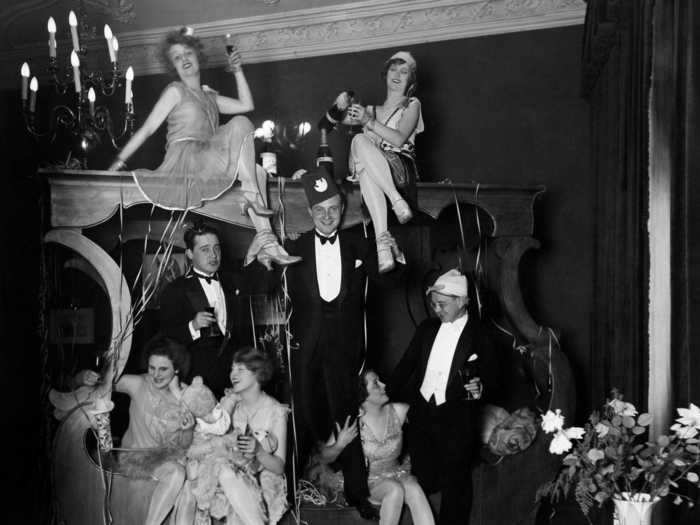
A New Year's Eve Party in Germany, 1927.
ullstein bild Dtl./Getty Images
Source: Bloomberg
The so-called "roaring '20s" were a response to years of hardship. World War I ended in 1918, but the world soon experienced two more curveballs.

Spectators in New York City celebrate the end of World War I.
Bettmann / Contributor via Getty Images
Toward the end of 1918, the Spanish flu started to rear its head. The pandemic - which didn't originate in Spain, despite its name - lasted for two years and claimed an estimated 50 million lives. One in every 15 Americans died.
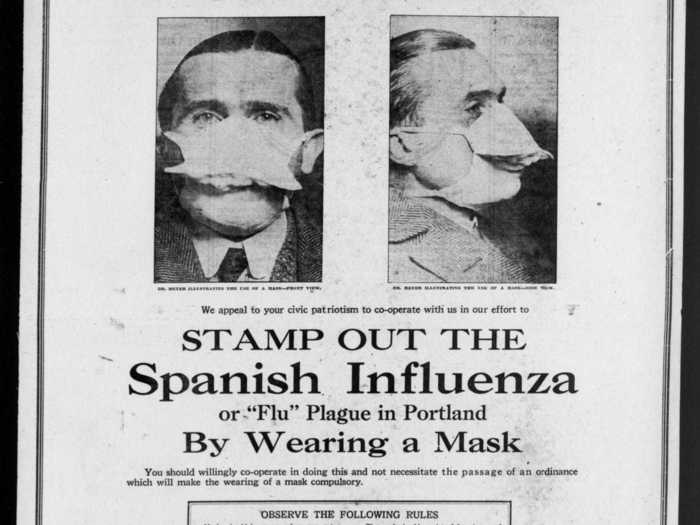
Quarantine and mask-wearing were among measures used to combat the spread of the virus, as shown in a newspaper clip from January 1919.
University of Oregon
Source: CDC, US Census Bureau
After the pandemic, the US economy experienced a post-war recession that lasted from 1920 until 1921. Wholesale prices plunged to lower levels than the Great Recession of 1929, and unemployment spiked.
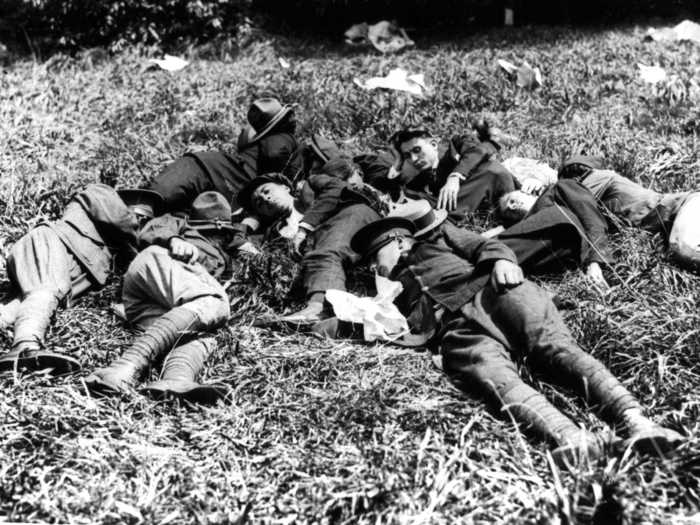
Unemployed workers sleep on the grass in New York's Central Park, 1921.
Photo12/Universal Images Group via Getty Images
Source: World Heritage Encyclopedia
Following the 1918 influenza pandemic and recession, people were ready to party, socialize, spend, and sin.
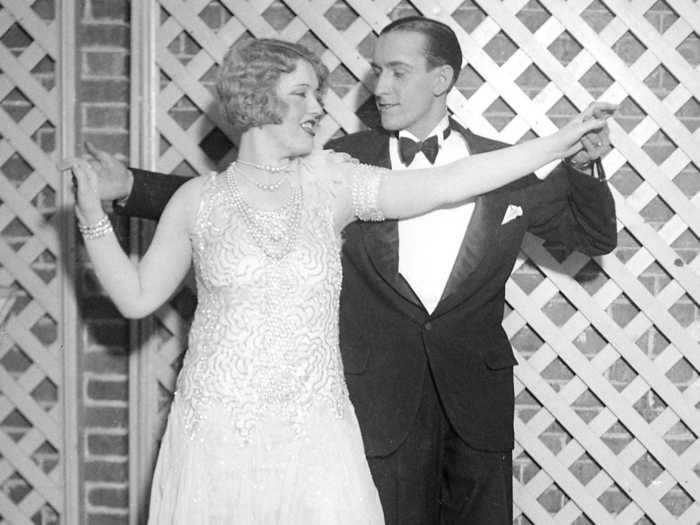
A couple dances in the 1920s.
Kirn Vintage Stock/Corbis via Getty Images
Jazz exploded, ushering in dances like the Charleston and female dancers known as flappers. Flappers flouted traditional ideals and wore a style of dress popularized by Coco Chanel that featured dropped waists and creeping hemlines.
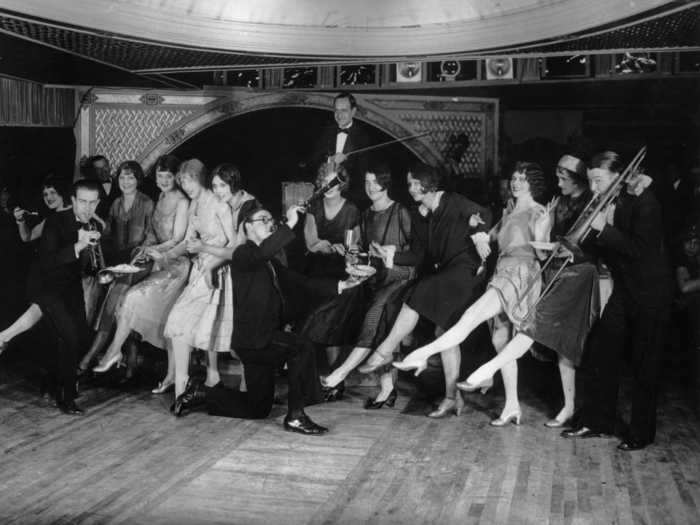
Flappers kicking and dancing while musicians perform during a Charleston dance contest at the Parody Club in January 1926.
Hulton Archive/Getty Images
Source: Library of Congress, FIT
In Harlem, New York, the Cotton Club emerged as a hub of music and culture, where the well-to-do would line up to see the latest dances and hear the latest jazz scores.
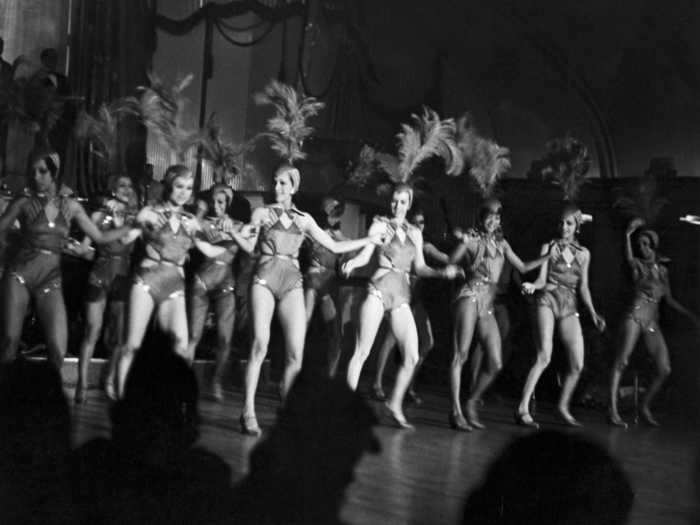
Floor show at The Cotton Club in the 1920s.
Bettmann / Contributor via Getty Images
Source: New York Historical Society
Music wasn't limited to jazz clubs, however. People would play music and dance just about anywhere.
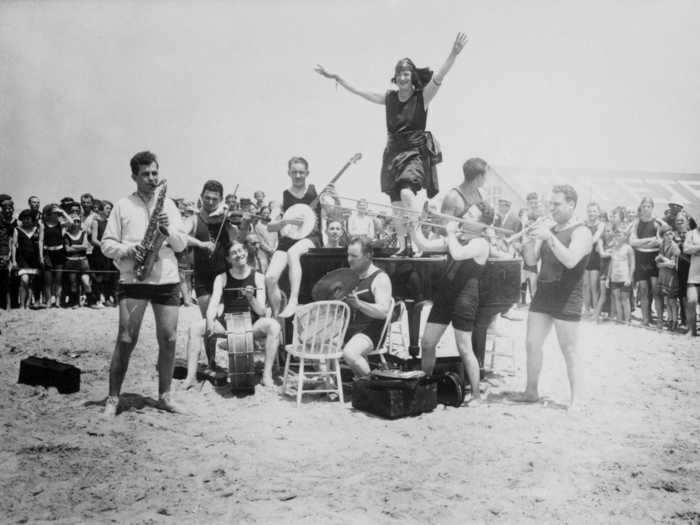
Benny Krueger's band plays on the beach at Brighton Beach in Brooklyn, New York, as girl dances on the piano in 1922.
Bettmann/Getty Images
During afternoons in the spring and summer, people young and old let loose at afternoon garden parties, enjoying lawn games and refreshments.
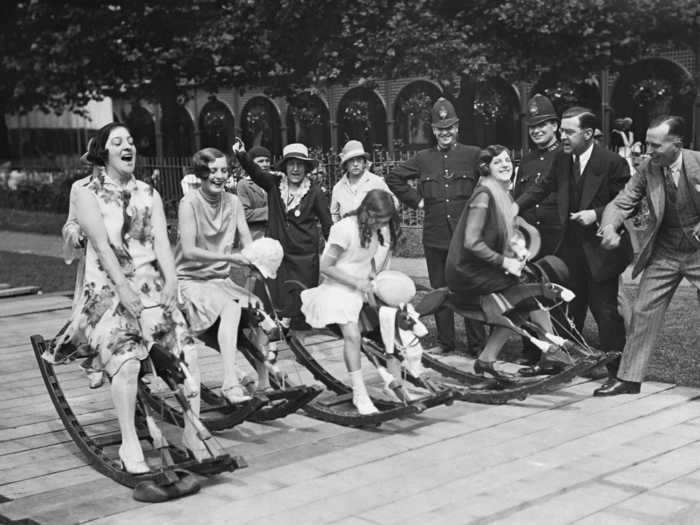
People ride wooden horses at a garden party in Kew Gardens, New York, in 1926.
© Hulton-Deutsch Collection/Corbis via Getty Images
Ladies often gathered for outdoor tea parties, donning hats and breezy dresses.
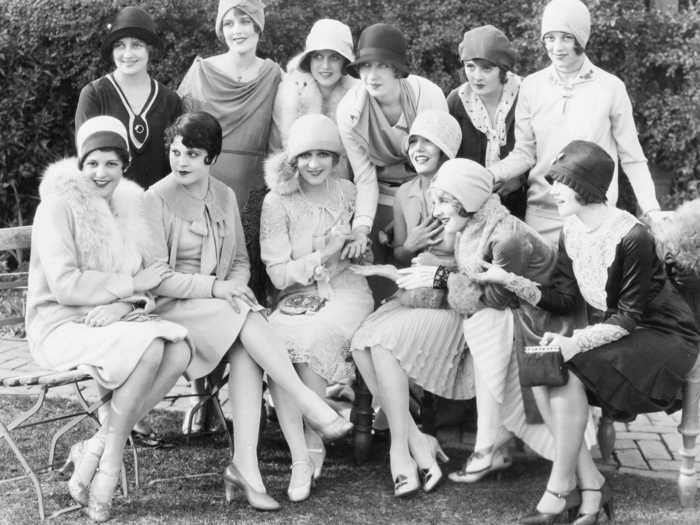
Mary Pickford (front center) is surrounded by fellow Warner Brothers actresses during a tea party, 1928.
© John Springer Collection/CORBIS/Corbis via Getty Images
Source: Art Deco Society of California
While women primped for garden gatherings, they sported more daring styles at the beach. Popular bathing outfits at the time had more revealing necklines than pre-war swimsuits.
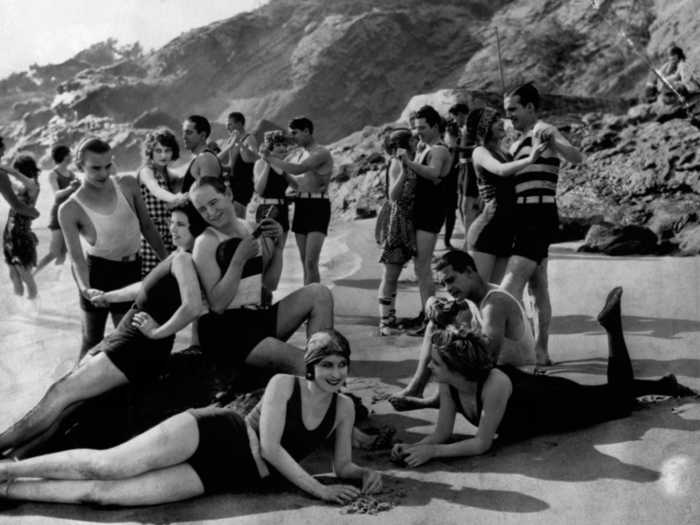
A Californian beach party in the 1920s.
© Hulton-Deutsch Collection/Corbis via Getty Images
Source: Insider
In the evening, people would dress up for themed parties like masquerade balls. Women typically wore opulent gowns embellished with beads, feathers, and sequins, and men donned suits.
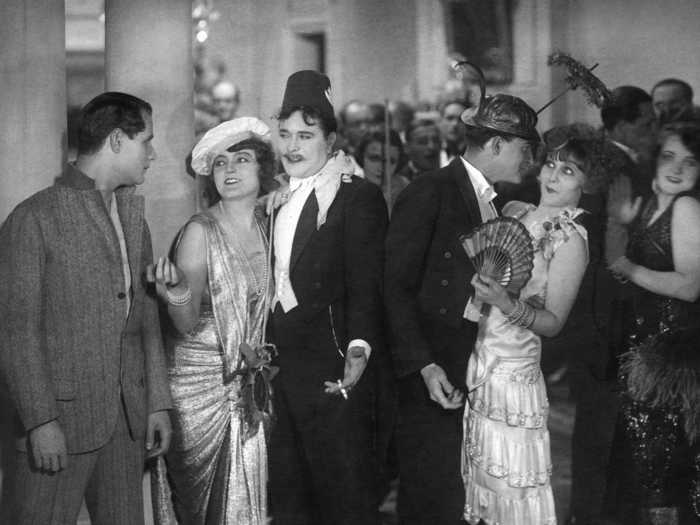
A masked ball in Vienna, 1927.
ullstein bild Dtl./Getty Images
Source: The Mob Museum
Fancy dress parties - which involved dressing up in costume - also emerged as a staple of the 1920s social calendar.
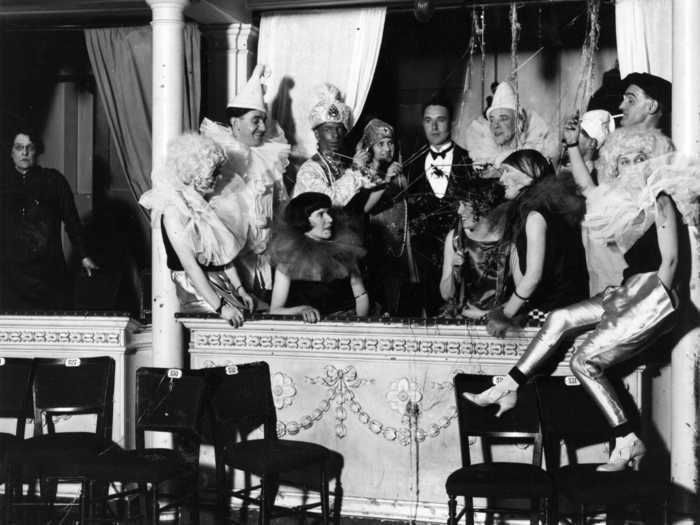
Guests at the 1926 Chelsea Arts Ball in London have a fancy dress party in their box.
Topical Press Agency/Getty Images
Fancy dress costumes ran the gamut, ranging from clown suits to wigs and top hats.
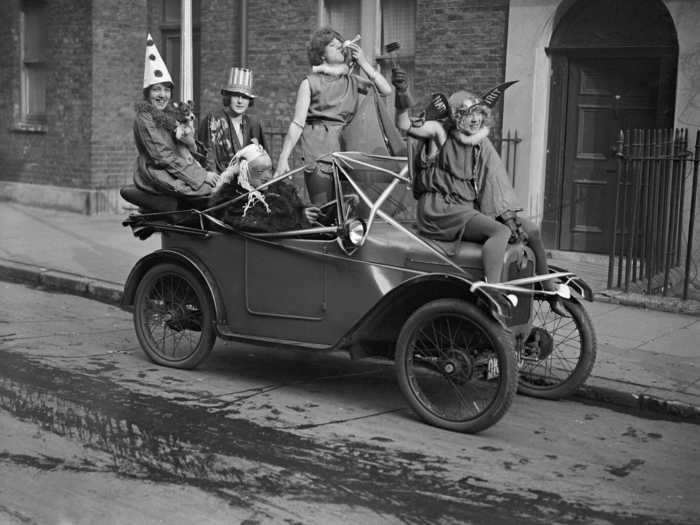
People on their way fancy dress ball in 1923.
Topical Press Agency/Getty Images
And while alcohol was banned in the US for the duration of the decade due to Prohibition, people found ways to drink at home or in speakeasies - because it was the "roaring '20s," and they weren't going to let the law get in the way of a good time.
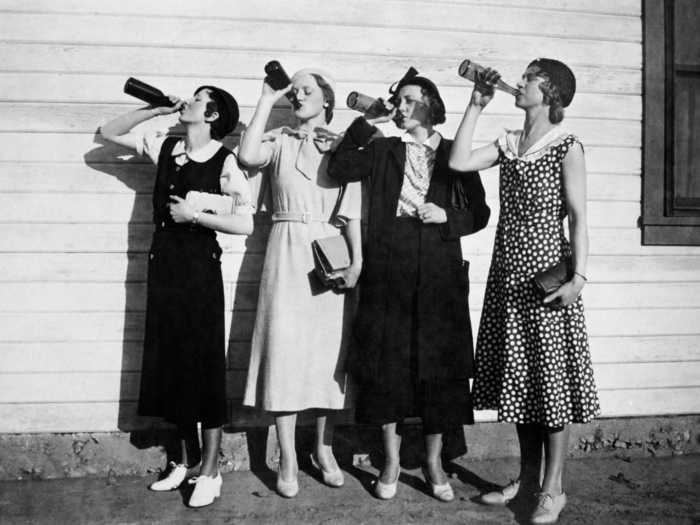
Four people line up along a wall and drink bottles of liquor, circa 1925.
Kirn Vintage Stock/Corbis via Getty Images
READ MORE ARTICLES ON
Popular Right Now
Popular Keywords
Advertisement